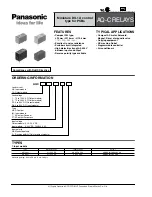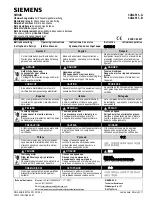
DIRECTIONAL
Current Polarization
.
a. Connect
24 of TEST CONNECTIONS.
b. Adjust the control spring for 0.5
pickup if current polarized or dual
polarized.
Potential Polarization
l
c. If potential polarized, connect-per Fig. 25 of
the control spring for 3.6 volt
amperes are
values for this test.
INSTANTANEOUS UNIT
TEST CONNECTIONS.
(
percent). Ten volts and 0.36
1. Select the desired range by making the proper connections at the rear of the relay
(see internal connections diagram).
Whenever possible always select the higher
range since it has a higher continuous rating.
2. Set the instantaneous unit to pick up at the desired' current level.
See the
ACCEPTANCE TEST section.
P E R I O D I C C H E C K S A I D R O U T I N E M A I N T E N A N C E
In view of the vital
protective relays in the operation of a power system,
it is important that a
be followed. It is recognized that the
interval between periodic checks will vary depending upon environment, type of relay
and the user's experience with periodic testing. Until the user has
enough
experience to select the test interval best suited to his individual requirements,-it
is suggested that the points listed below be checked at an interval of
one to
years.
These tests are intended to ensure that the relays
original settings.
If deviations are encountered, the
serviced as described in this manual.
TARGET AND SEAL-IN UNIT
Check that the unit picks up at the values shown in
Check that the unit drops out at 25 percent or more
TIME OVERCURRENT UNIT
have not deviated
their
relay must be retested and
Table 11.
of tap value.
1 .
Perform pickup test as described in the INSTALLATION section for the tap in
service.
2.
Perform the time tests as described in the INSTALLATION section.
DIRECTIONAL UNIT
Repeat the portion of the installation test for the polarity condition for which
the relay is connected in service.
*Indicates Revision
19
















































